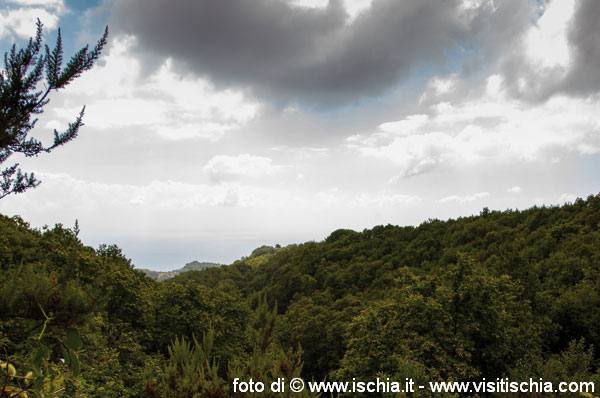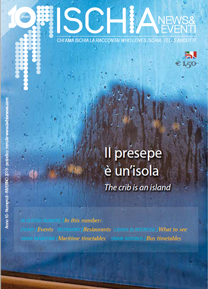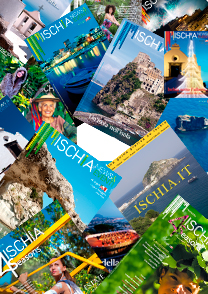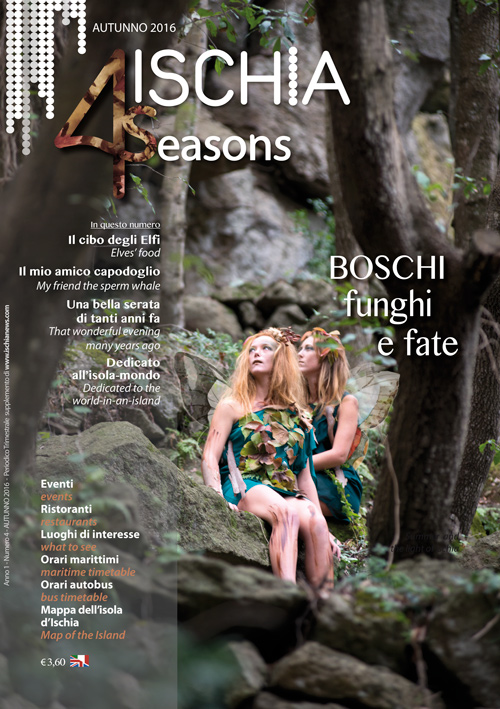Autumn, between mushrooms and perfumes

Autumn is in the air, in the scent of fermenting must and vinasses scattered in the fields. But it is definitely in the woods that we perceive more: chestnuts begin to fall (ready to be harvested), decorating here and there on the carpet of leaves, which hides among other things mushrooms, chestnuts along with the real stars of the autumn season. The route that we propose this month in full autumnal theme takes us to two of the most beautiful forests of the island.
Driving along a stretch of the CAI 501, that one traces the history of green tuff.
The green tuff trip is a journey into the heart of the island, where the geological sites, vegetation, and human history come together in a unique landscape.
The complex structure of the territory involved, in addition, also an extensive network of connections (paths, mule tracks, steep steps), often dug in the rock layers, while the cultivated land, punctuated by terraces, were borne by a typical drywall containment: the "parracine".
Starting from Piazza di Serrara walk up to the restaurant Bracconiere to send us in a wild and fascinating landscape on the west side of the island (Forio), until you get the forest of Frassitielli, a terrace of dense acacia trees. In the forest, the locust (Robinia pseudoacacia L.), an introduced North American species, interspersed with several specimens are spurge (Euphorbia characias L.) and types of fern, such as Polypodium vulgare and Pteridiunium aquilinum. The undergrowth and the edges of the paths are characterized by the presence of valeriane (Valeriana officinalis L., L. Centranthus ruber), anemones (Anemone nemorosa), violets (Viola canina L), psoralee (psoralea bituminous), cyclamen (cyclamen purpurescens Mill), splints (Ferula communis L.), broom (Spartium junceum L.), as well as a series of aromatic and medicinal plants such as the nepeta (Nepeta sp. L.), savory (Satureja hortensis L.), dandelion (Taraxacum officinale Weber), nettle (Urtica dioica L.), chamomile (Matricaria chamomilla L.), Parietaria (Parietaria officinalis, L.), thyme (L.), fennel (Foeniculurn vulgare Mill.) and wild oregano (Origanum vulgare L.). This is the realm of the wild rabbit that has played and plays a key role in the local culinary tradition. Continuing along the path you are immersed in a second forest, to the Falanga, here the reality meets fantasy. The forest of Falanga have a terrace at about 600m above sea level, right at the foot of Mount Epomeo. The latter is formed as a result of a rise in the earth?s crust (horst - volcano - tectonic). It is evident, in fact, the fault surface, which is a majestic wall of green tuff, carved by wind and mottled with lichen, covered with holm oak (Quercus ilex L.), strawberry (Arbustus unedo L.) and heather (Erica arborea L.), wherever the slope permits. Into the woods you have the feeling of stepping into another dimension. The most humid and cool environments, allow the spread of deciduous of prevailing chestnut (Castanea sativa L.), which are accompanied by native arboreal elements (different species of oak: Quercus robur L and Quercus pubescens) .
Considering that the seismic and volcanic nature of the island of Ischia has influenced over the centuries the stories of local people, forcing them to continuous adaptations to the territory, this meant that you develop an extraordinary example of rock-cut architecture, due to the long work of transformation green tuff boulders tumbled down the roads of the island. The latter, in part, are naturally carved by the elements (such as the so-called stone "Perciata", with its characteristic erosion a honeycomb), and in part were dug by men who have obtained millstones, deposits and temporary shelters. The "houses of stone? are so perfectly integrated with the vegetation and the surrounding environment, to blend in with nature and for this to become a good defense against pirate raids. Here they form a real village, which together with the remains of ancient parracine (now covered by vegetation) show traces of a past in which the screws were to dominate the landscape and the chestnut trees. It can therefore be assumed with sufficient certainty the development in this area and the presence of a widespread activity Agrivinicola.
Of particular interest are the "pits of snow? that you encounter along the way. These holes dug in the ground, cylindrical, covered with local stone, which were used to collect the snow, especially in times past, was more abundant and necessary for different uses.
From the point of view of the mycological Falanga Wood can give great emotions to those who want to make only a walk, as it is one of the most comfortable seats and flat to the research of edible mushrooms epigeal.
Of all the genres in this location certainly the most sought after by locals are the boletes. After a few days of the first summer rains are found in fact numerous fruiting bodies of Boletus aestivalis also called "Estatino", one of the first to appear butter mushrooms in the woods, that is recognized by the light brown hat and a clear pattern on the stem. The environment preferred by aestivalis is the chestnut grove. These mushrooms have a fairly short life cycle, so that the texture of the meat becomes soft very soon. In any case it is an excellent edible and that always gives generous collected.
Other boletus highly sought after and abundantly present in the area is the Boletus aereus, better known as "Bronzino? or "Black". These mushrooms prefer dry soils and hot and they are found in symbiosis with plants of chestnut, oak, holm oak heather and many other plants typical of the Mediterranean. B. aereus takes an important size and has a life cycle long enough, so the texture of the meat will remain firm for many days.
Surely there are many very boletes of the ?filthy ?which luridus Boletus, Boletus rhodoxanthus, Boletus erythropus e Boletus rhodopurpureus, which are all named as "ferrigni? by the collectors of the area. Some of these fungi are not edible, but luridus and erythropus are edible after prolonged cooking. It is recommended not to consume filthy if you know them properly, but especially if you do not know how to cook them well as they are all poisonous when raw.
Looking through the chestnut trees you can find a mushroom very famous which is the Fistulina hepatica, or "ox tongue?. It is one of the few fungi that can be eaten raw to salad, despite the gelatinous consistency that at first glance definitely enhances this type of preparation.
Continuing with mushrooms that can be eaten raw, one cannot even mention the Amanita Caesarea, better known as Ovolo good. It is a fungus good to eat, but also very nice to see, that grows well both under the chestnut trees that under the oaks. Like all amanita should be collected with care, but most should be collected only when the white veil that covers this kind of fungus is naturally torn and one can see all the characters that lead to a certain determination of the fungus.
Many are deadly amanita, but the real problem is that the stage of Ovolo or the juvenile stage are all very similar and a seeker inexperienced may fall into a fatal error.
Amanita Caesarea mushroom is not a very common, but it is faithful to the places of growth.
Among the fungi most spectacular find the Parasol mushroom, also known as ?bat drum? which reaches considerable size.
It is recommended to always good cook these mushrooms as they are poisonous to raw as well as the little family of Armillaria mellea or "nails", which in autumn are found in large numbers on rotting stumps of many trees and that should always be consumed after a boiling.
Proceeding towards the end of autumn the woods of Falanga turn yellow due to the presence in large numbers of fruiting bodies of Cantharellus cibarius also called "chanterelle", one of the best existing fungi that should never miss in mixed mushrooms, for its delicious flavor.
After a moment of weakness and relaxation in this fairytale world, we take the path that leads us to an old mule track embedded between dry stone walls, and bordered by thriving chestnut (we hold a little for mushrooms!) And that leads us to a small rural hamlet built around a church dedicated to Our Lady: the village of Santa Maria al Monte, a focal point, connecting various paths used for activities related to the production of wine. The space in front of the Church offers a wonderful view of the town of Forio.
Here we conclude our journey, remembering to seekers that mushroom picking is under the Regional Law No. 8 of 24 July 2007 and that the collection of mushrooms is permitted after passing the qualifying interview schedule. For those who are already in possession of a card authorizing the collection of mushrooms also remind you to respect the minimum size of 3 cm in diameter of the cap and the maximum weight of 3 kg. Finally, do not forget to never cut the mushrooms at the base of the stem, but root them out gently and then clean them and then put them in rigid containers and ventilated as wicker baskets.










